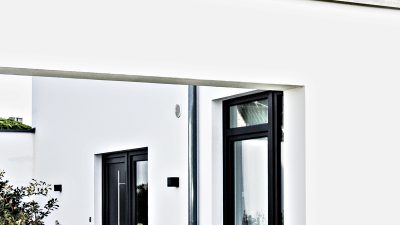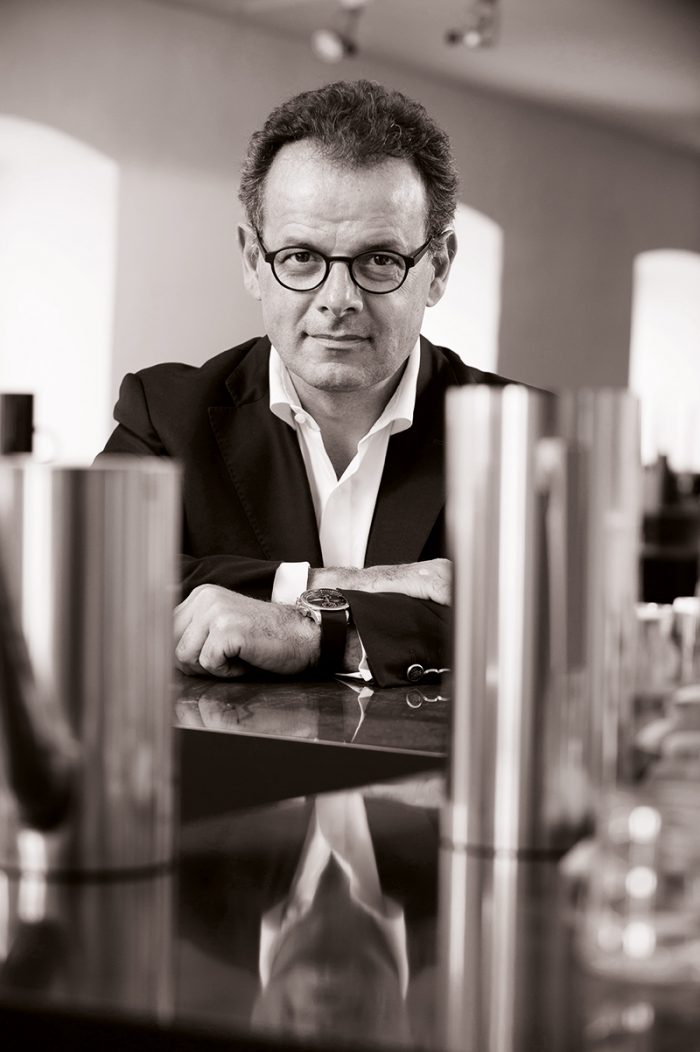Michael Ring, the CEO of Stelton tells us about the road, the challenges, the lessons and rewards of running an established design brand, refining and developing this unique design heritage.
Michael Ring/Stelton: I was a managing director of Georg Jensen and also Royal Copenhagen. As I was in Tokyo for a meeting one day, I got a call from the secretary notifying me about that the chairman would like to speak with me. I thought I made some good business proposals and got new partners in Tokyo, so probably this would be a conversation about the good things I have accomplished during the meeting in Japan. Surprisingly this turned to be the day when I was told I was not longer the CEO of the company. I was not fired because of bad results, nevertheless, sometimes in a corporate world you face competition, where there are several people who would like to have your job. Apparently there where people who could convince the chairman of the company that they could do a better job as CEO than I.
The company did have a bad conscious about letting me go despite I have not done anything wrong, nevertheless, they did let me go. I felt that something brutal happened to me. I was in shock. For many days, I just layed on the couch all day and felt pity for myself. On that Friday afternoon, my 16 year old daughter came come and saw me lying on the couch, watching a movie. She looked at me and said: “Father, you can stay down or you can stand up, the choice is yours”. These words where so powerful, so awakening. It’s very hard and true, to hear from your child. As my wife came home from work, I asked her “is that really that bad?” “Yes”, she replied, “…we have never seen you like that before”. During the next days, I took long walks in the forest, thinking this situation through. I then gathered my family to discuss how do we move on.
When something very dramatic happens to you, usually it is when you are not prepared for it. This could be death, divorce, losing a job – if you are not prepared for it, it can rock your foundation for living. It is then when we have the choice to either stay down or to stand up and make a positive shift in our lives.
As we gathered as a family, I said: “listen, if this should not ever happen again, I had to become independent, self employed, have my own company. I also told them that the chances I would not become successful, are also there”. My family was backing me in my decision and I decided to take action in that direction of independence. I knew the industry very well. I called the old owner of Stelton Peter Holmblad. Back then it was quite known that the CEO of Jorg Jenson was fired and people were wondering why, if the company was doing so well. Peter Holmland said to me on the telephone: “Michael, I don’t have a job for you”. “Peter I know, this is not the reason I am calling you” -I answered. “I would like to talk to you about something else” – I answered. Peter told me that he has no time at the moment because he has to walk his dog. “I also have a dog, why don’t we walk the dog together?” – I asked. We have a very nice forest in the north of Copenhagen – called Dyrehaven. “Can you be in Dyrehaven
in 15 minutes?” – asked Peter. I showed up in Dyrehaven in the next 15 minutes. We drove into a parking lot in the same car, the same Volvo in the same special color. We opened the hatchbag and saw that we both have the same dog – a flat coated retriever. Me and Peter both shared the love for sailing. After a half an hour of conversation with Peter, basically, I have bought the company Stelton. Because Peter was getting older, his children did not have an interest to run the company. Stelton of course was like his child, he made Stelton. Peter told me how important to him was that the company would be in the right hands. So this is how I became the owner of Stelton.
There is always something good that can come out of something bad, if you grab the situation. But you have to grab it by yourself, because it is not coming to you.
At that point of time, Stelton the brand was intakt, however it had not developed new products for years. The investment in buying the company was not an easy one as you can imagine. I did not have the full capital from the start, which was necessary to buy it. I did not come from a reach family – I was a self made man. We pledged all our belongings, the house, even the dog was pledged. And we started! The goal was to move Stelton to a new Era. From the beginning we had that in mind. We both had in mind that we want to make product lines. If you look at our thermal Jag or the Arne Jacobsen line, it is super minimalistic but also a very rigid design. Some females find this design to be to masculine in its shape. We wanted to keep the design DNA and at the same time to build something based on the Scandinavian design design philosophy. At the same time we want to take it to a bit new direction, – still keeping it minimalistic but with a new twist. We work with the classic Stelton collection nearly every day and develop it into new product lines. Just recently we developed an electric kettle in the EM 77 line that just came out to the market. In addition we added the french press, tea press and several new products to the classic collection. We walk along with the design tendencies – when bronze was in, we made it in bronze, when brass was very popular, we made it in brass. Same in regards to the color scheme. By constantly add new features like color and surface you can keep a product line alive. I mean, how many product lines are known to be more than 40, 50 years old? Not many.
The other important theme for us is the respect for the original design. That’s one of the reasons why Norman Foster, who has more than 4K architects working for him, sat to do the drawings for a new collection by himself and was thinking “there is only one company who can make these products – Stelton”. Why did he pick us? Because we are that design house that takes good care of design lines. The design lines have a life in our design house.
There are four main directions for decorating your home: There is the Scandinavian way, which is very hot at the moment, especially in Germany right now. Then you have the international minimalistic, the country style and the formal style. Actually Valerie your work, is in my opinion falls into the international minimalistic. I also live with international minimalistic style. It’s one of the currently popular style directions. The formal style is made out of Barrock and other old classical directions. The many old architects in Germany for example worked with Jugendstil, new classicism style, so that many beautiful buildings were made and restored after the war in those styles. Scandinavian design actually based on the German Bauhaus Style. You know the story of the Bauhaus came out in the early twenties where everybody went to Art deco direction after Jugendstil. At that time in Germany was a group of designers and architects who were very strong, who started that Bauhaus Era. During the war, many of those architects and designers where limited, reduced so they moved to Denmark. Most of our very known designers in Denmark actually where Bauhaus descenders. Arne Jacobsen for example who was jewish was affected by the Nazi racial laws as architectural assignments where hard to obtain for jewish architects. After the exile he was invited to create several projects in Germany. Poul Henningsen was also jewish and faced a similar destiny. All those very talented designers, as Denmark was occupied they moved to Sweden because it was more neutral country during the war, after the war they moved back to Denmark and started companies or joined ventures with known design companies. The furniture and lamps that where created at that time by those designers, were what we call the “Danish Modern” Era Style. The Danish Modern was made during the 50s, and 60s and was build on the Bauhaus Era Style.
Valerie Schöneich/ Designsetter: Yes, for sure. I can see this influence in your products. For example recently I saw at the Bauhaus exhibition in Hamburg, Germany a Bonbonniere from the Bauhaus Era which reminded me in its form the Stelton “Peak Bonbonniere”.
Michael Ring/ Stelton: Yes, the designer of the Stelton “Peak Bonbonniere” is the german Mikaela Dörfel who was very inspired by the the tension of Bauhaus shapes.
Our mission at Stelton ist to enrich lives by making designs which are affordable, beautiful, functional. Eventually, recent research by the university in Finland and Harvard proves that if you surround yourself by aesthetic, you might live longer. That does not necessary means surrounding yourself with expensive things, rather aesthetically appealing to you things. Speaking of non expensive. The Stelton Vacuum Jug costs at the end less than a hot dog. Why do I say that? Because if you have this Jug it will last at least 20 years. If you drop it, you can by spare parts to repair it. If you take the price of the Jug and divide it by 20, you come to an amount that is less than the cost of a hot dog.
Valerie Schöneich/ Designsetter: Yes, this is also a counseous way to live. Instead of buying too many things, we can live with daily design objects that last for years and never go out of style. I find the Stelton Classic Vacuum Jug EM 77 for example to be very adaptable to different homes and decoration styles. I used the same jug in photography at different homes and it looked everywhere fitting and beautiful.
Michael Ring/ Stelton: Yes, you can never get disappointed by such design projects. I think I have a the best job in the world because I get to work with best designers and architects in the world. There is one german architect and designer with whom I would love to work with: Dieter Harms. He was so much ahead of his time. That’s why the founder of “Apple” was so affine of him as well. Lots of Dieter Rams Designs are gone unfortunately. The small alarm clock from Braun is still there but all the beautiful household items he has made are not seen at homes today. I am sure we could have made great things together and revive his products.
Have you thought about why there are not too many german design companies today?
Valerie Schöneich/ Designsetter: Yes, actually I think about this often. I work a lot with Nordic Design brands and see how they are proud of their work, they believe in it and share about it a lot. I spoke with a lot of German Designers and asked them the same question you ask me now. Well it goes back to history – What happened in Germany during the war left the people who live here feel uncomfortable to express a national pride, to say “this is our identity”. Even the new generation. However I think it is about time to leave the past behind. There are so many cultural elements about Germany that are being kept too modest and need to be shown with pride to the world. German Design is one of those cultural elements. I meet many german designers who design for renown nordic design companies and they do not feel free to say out loud that their designs are part of “german design”, rather they feel more comfortable to be known as contribution to nordic design or other European design movements. I think there is such an opportunity to break through this cultural stigma through showcasing with pride German Design.
Michael Ring: I think this is also because Germany has the best car industry in the world and the car industry takes all the best designers. The top design pool is taken by the automotive industry. The other thing I have learned from running a big design house is that one needs to dare and to accept failures. Germans strive to perfection. Maybe it is the social cultural theme in Germany – to allow ourselves to fail is what making it hard. I used to work in Munich Germany for a Design company so I got to see this cultural aspect. Our Line Rig Tig – most of the products for this line are made by either German or French Canadian Designs.
Thank you Michael for this inspiring conversation.











